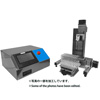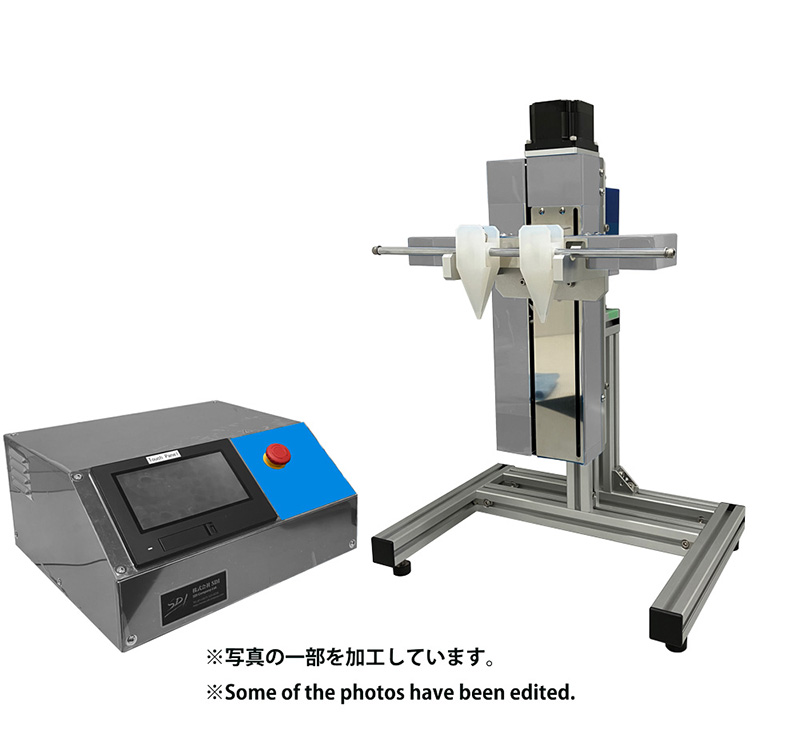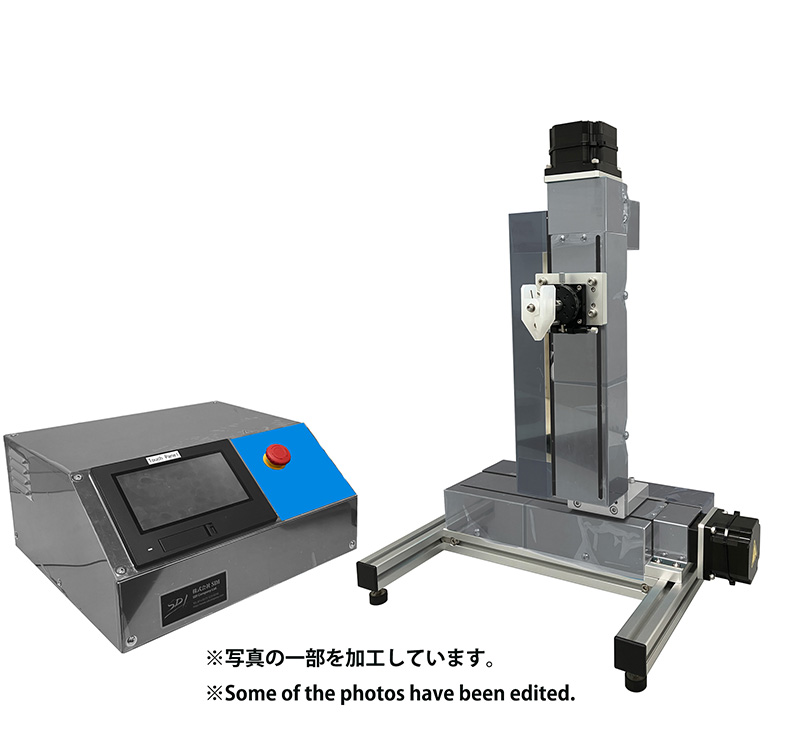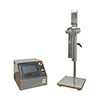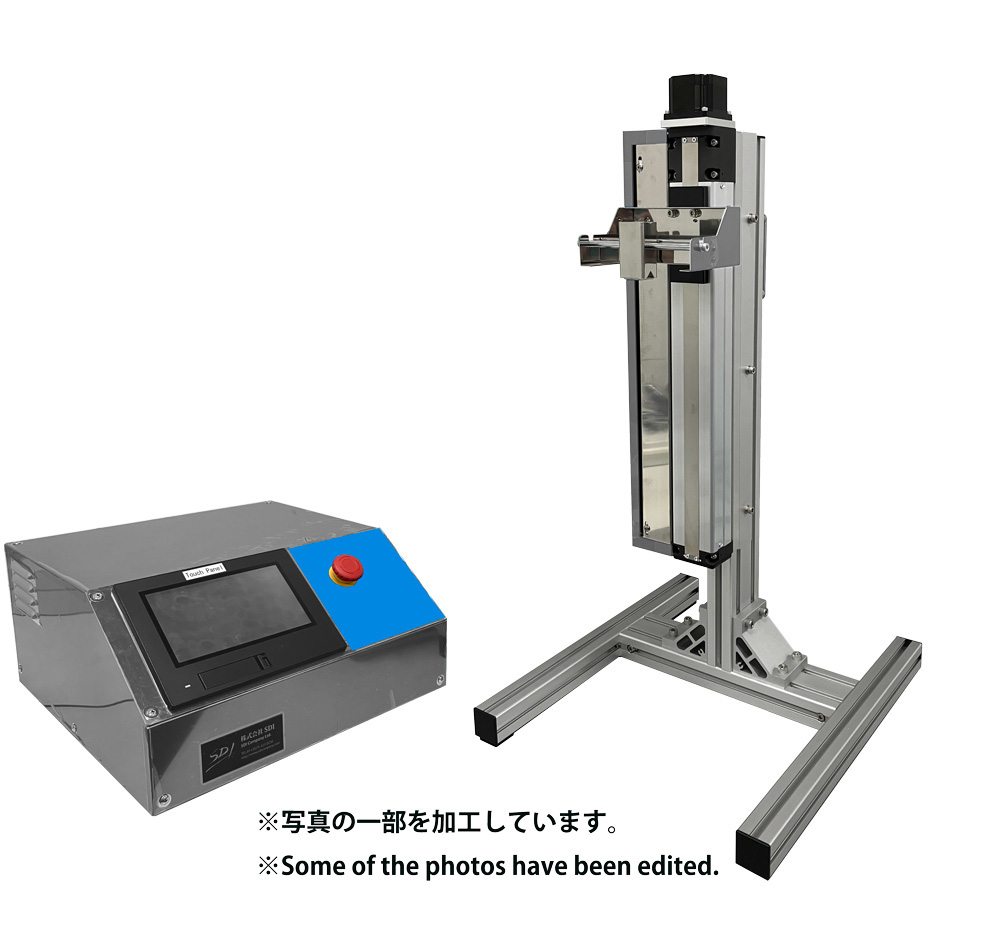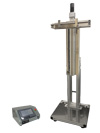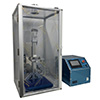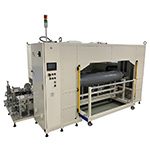Machine Translated by Google
EinTesla Joint Research Report
Date 2006/12/01 Author
Sachiko Matsushita, Department of Physical and Life Sciences, College of Liberal Arts and Sciences, Nihon University
We would like to report on the fine particle structures we created using your device.
Equipment used: ND-0407 Customized
Substrate used: Non-fluorescent glass slide (Matsunami, Co.) 1x3 cm Microparticles used: Polystyrene microparticles (particle size 200 nm) at 1 wt% concentration, water-soluble Liquid (Seradyn)
Setting angle: 45 degrees
Pulling speed: 1 -99 μm/s Observation
area: Top of substrate (arrow side in right image)

Observation equipment: Olympus optical microscope
Observation mode: Transmitted light
Result: Attached are photos of some interesting structures.
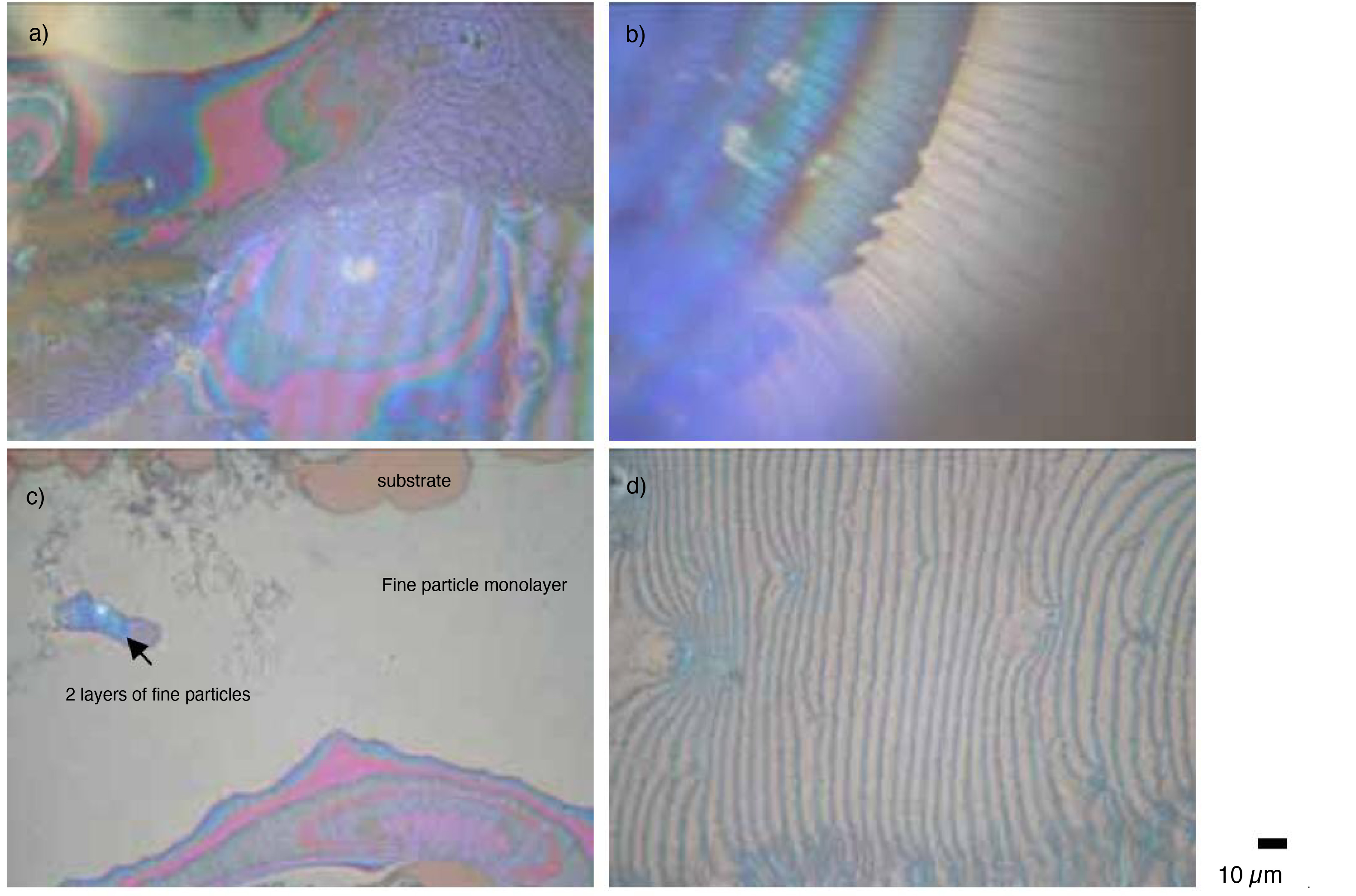
Although we were unable to report this time, as a result of setting the substrate at an angle, the particle suspension on the substrate
This has changed the flow of the material, affecting the structure generation process.
Currently, it is difficult to control the temperature and humidity, making it difficult to reproduce the generation process.
We will then increase the amount of data and investigate the structure generation phenomenon that depends on the substrate setting angle.
Substrate used: Non-fluorescent glass slide (Matsunami, Co.) 1x3 cm Microparticles used: Polystyrene microparticles (particle size 200 nm) at 1 wt% concentration, water-soluble Liquid (Seradyn)
Setting angle: 45 degrees
Pulling speed: 1 -99 μm/s Observation
area: Top of substrate (arrow side in right image)


- In the result diagram a, the interference color of light depending on the film thickness was confirmed.
The blue part adjacent to the light yellow part is two layers, the red part adjacent to the two layers is three layers, and the red part adjacent to the The green part is four layers, and the color changes depending on the number of layers. This multi-layered part is not in the center of the board, but in the "liquid reservoir" at the bottom edge of the board, which is the last to dry.
- Result Figure b is the "liquid reservoir part" like Figure a. Excessive fine particles are present in the liquid reservoir part.
However, cracks occur during the drying process of the solution.
- Result Figure c shows a wide area of the monolayer. This monolayer was confirmed in the center of the substrate, and the principle of structure
formation is different from a and b. The principle of formation of this monolayer is advection accumulation by lifting the substrate.
This is thought to be due to the following.
- In the result diagram d, stick-slip motion occurs when the substrate is lifted, and the particles form stripes.
The figure shows a portion in which the nuclei are arranged in a shape similar to that of the nuclei.
Currently, it is difficult to control the temperature and humidity, making it difficult to reproduce the generation process.
We will then increase the amount of data and investigate the structure generation phenomenon that depends on the substrate setting angle.
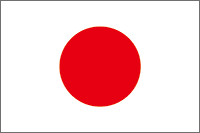 Japanease
Japanease English
English






